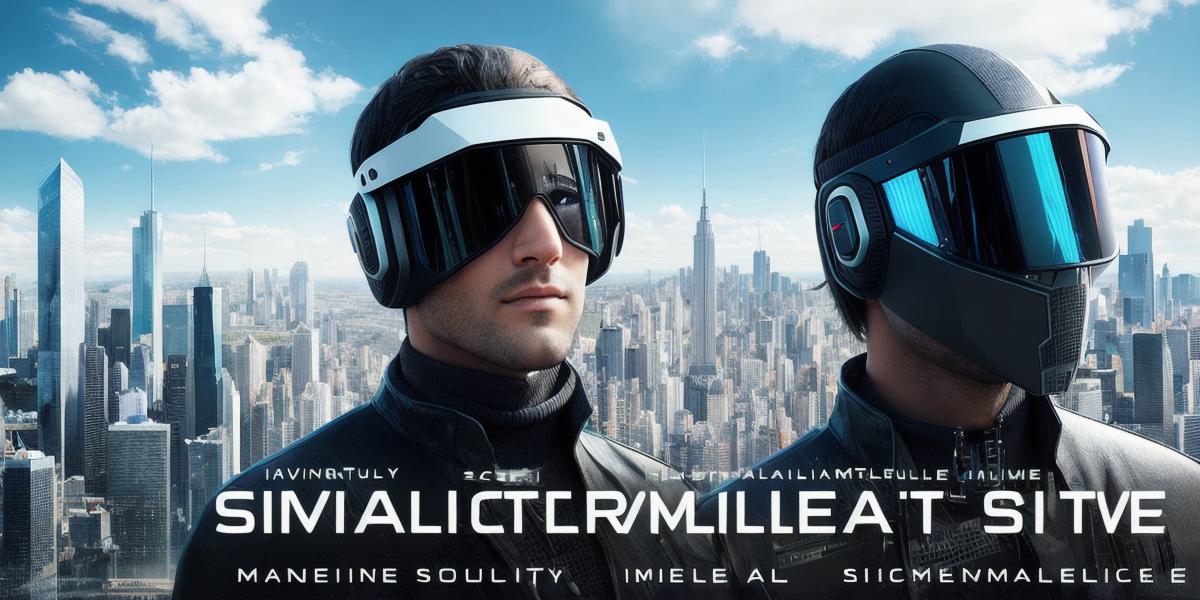Simulated reality, also known as virtual reality or augmented reality, has been a topic of debate for many years now. Some people believe that simulated reality is just science fiction, while others are convinced that it will become an integral part of our daily lives in the near future. In this article, we’ll explore the possibility of simulated reality and examine the evidence that supports its existence.
Virtual Reality (VR)
Virtual reality is a computer-generated simulation of a 3D environment that can be interacted with using special electronic devices such as headsets or gloves equipped with sensors. VR technology has been around for decades, but it’s only in the last few years that we’ve seen significant advancements in this field.
One of the most popular uses for VR is gaming. Players can enter a virtual world and interact with characters and objects within that world using their body movements. However, VR technology has also found applications in other areas such as education, therapy, and training. For example, medical students can use VR simulations to practice surgeries, and astronauts can use VR simulations to train for space missions.
Augmented Reality (AR)
Augmented reality is a technology that overlays digital information onto the real world. This information can be in the form of images, videos, or other interactive elements. AR technology has been used in a variety of applications such as marketing, entertainment, and education.
One example of AR technology is Pokemon Go, a popular mobile game that uses AR to allow players to catch virtual creatures in real-world environments. Another example is Snapchat filters, which use AR to add digital elements to photos and videos.
Is Simulated Reality Real?
The question of whether simulated reality is real or not has been the subject of much debate. Some people argue that simulated reality is just an illusion, while others believe that it’s a real phenomenon that can be proven through scientific research.
One study conducted by scientists at Stanford University found that the human brain cannot distinguish between virtual and real environments. This study raises the possibility that our perception of reality may be influenced by simulated environments, and that we may not even be aware of it.
Another study conducted by researchers at MIT found that people who spent time in a VR environment reported feeling more happy and less stressed than those who spent time in the real world. This suggests that simulated reality can have a positive impact on our mental health and well-being.
Case Studies
There are many examples of simulated reality being used in real-world applications. One such example is the use of VR in therapy for people with PTSD (post-traumatic stress disorder). In this therapy, patients are exposed to virtual simulations of traumatic events in a controlled environment, allowing them to confront and overcome their fears in a safe and effective way.
Another example is the use of AR in retail. Many companies are using AR technology to allow customers to see how furniture or other products would look in their homes before making a purchase. This has been shown to increase customer satisfaction and reduce return rates.
Summary
In conclusion, simulated reality is a real phenomenon that has many applications in various fields such as gaming, education, therapy, and training. While there is still much research to be done in this field, the evidence suggests that simulated reality can have a positive impact on our mental health and well-being. As technology continues to advance, we can expect to see even more exciting and innovative applications of simulated reality in the future.
FAQs
- What is virtual reality (VR)?
Virtual reality is a computer-generated simulation of a 3D environment that can be interacted with using special electronic devices such as headsets or gloves equipped with sensors. - What is augmented reality (AR)?
Augmented reality is a technology that overlays digital information onto the real world. This information can be in the form of images, videos, or other interactive elements. - Is simulated reality
